Braves Trade Young Talent for 30-year-old Hector Olivera, and It Makes Perfect Sense in Rebuilding Plan
The world of Atlanta Braves fans is spinning backwards. Less than a week after trading beloved and productive veterans Kelly Johnson and Juan Uribe for mid-level pitching prospects, the Braves were part of a blockbuster trade deadline deal that sent young talent packing in exchange for an injured, unproven 30-year-old international player, as well as some spare parts, at least as the now confirmed trade stands at this point.
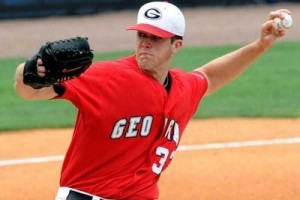
Here is what the Braves gave up:
- Alex Wood, 24, who has two solid years under his belt. In 368.2 innings, he has a 3.10 ERA and a 3.17 FIP. Wood has one pre-arbitration year remaining and four years of team control.
- Jose Peraza, 22, a consensus mid-season top 5 Atlanta prospect, ranked the Braves top prospect by Baseball America and others, and a Top 100 prospect in all of baseball. He is hitting well but walking little in AAA.
- Jim Johnson, 32, the Braves most consistent reliever in 2015 and current closer. He is a rental as his one year, $1.6 million contract expires at season’s end.
- Luis Avilan, 26, the Braves most irrationally hated player considering he’s put up good numbers for a middle reliever. Avilan is arbitration eligible in 2016 and has three years of team control.
- [Update: Bronson Arroyo, 38, meaning we salary dumped a salary dump; the guy must feel really loved. But it does, in a way, make the Touki Toussaint acquisition look even better.]
Here is what the Braves get in return:
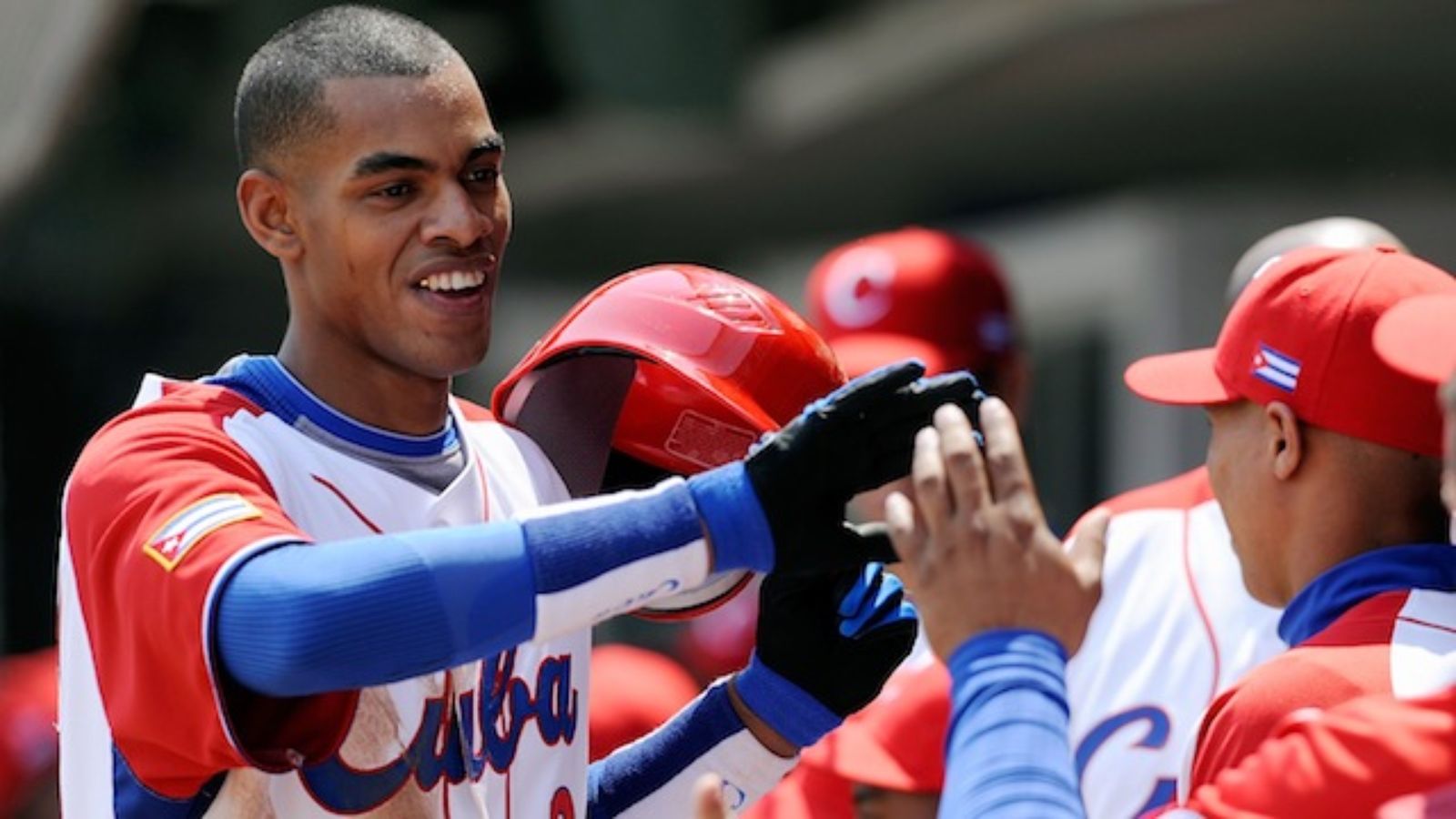
- Hector Olivera, 30, a top international signing out of Cuba who can play 2B, 3B, and potentially LF. He has a .323/.407/.505 line in more than 3,000 plate appearances in the Cuban version of the Major Leagues, and .348/.392/.493 in 74 plate appearances across three minor league levels this year. He is currently in AAA and ready for the MLB, but he is nursing a hammy. He is signed through 2020 with a team option contingent on his right elbow staying healthy. (Discussed further below.)
- Paco Rodriguez, 24, a solid lefty reliever who is currently sidelined with a non-ligament elbow injury (bone spurs).
- Zachary Bird, 21, a high upside, high risk pitcher in A+ who struggles with control but found more velocity. He just turned 21 and is young for the league.
- First round competitive balance pick, projected to be pick #35.
Initial Fan Reaction: Whut the Wha?
At first, the deal seems very odd. Why would a rebuilding team trade valuable MLB pieces in Kelly Johnson and Juan Uribe for ho-hum pitching prospects, then turn around and trade a really good pitcher already in the major leagues with four years of control remaining – for an older player with no MLB experience? And then why add arguably the top positional prospect in a system short on those?
I can understand the frustration and confusion because I feel it. I like what Wood is doing in Atlanta, and I don’t like giving up positional prospects who are near MLB ready. I’m still wondering if there is another shoe to drop that will make sense of it all.
However, stepping back and looking at the Braves front office as a group of people making logical, strategical decisions geared toward winning in 2017 helps the trades make more sense, even as it stands now.
The Big Picture
The Braves are a mid-market team with an opening day payroll of $97.6 million (23rd in MLB). They are thought to have the budget in 2015 to field roughly a $100 million to $120 million team ($112 million in 2014). The new stadium is anticipated to open in 2017 and generate more revenue, which is expected to increase payroll some unknown – but not infinite – amount. (Here’s a cool live webcam of the new park being built if you want to check progress.) In other words, while we aren’t the Marlins (opening day payroll of $68.5 Million), and we might be heading a little more toward the top third of teams in terms of payroll, we definitely aren’t going the way of the big budget Dodgers ($273 million), or probably even the Giants ($173 million).

The Rebuilding Plan
I have broken the rebuild down into a brief description of the nine levels that must be stacked onto each other in order to have a team that can reach the World Series in two years. I chose to do it as levels instead of steps because one level does not end when the next begins. Instead, each subsequent level needs the prior level to provide a firm foundation to hold it up. Also, this is my perspective. I have no inside sources, but I think what the Braves are doing and what they are moving toward is pretty transparent and logical:
Level 1: The foundation of any successful rebuild is to have smart people running it. The Braves fired Frank Wren (and his brother), promoted experienced franchise rebuilder John Hart, to President of Baseball Operations and made the highly rated up-and-coming General Manager prospect John Coppolella the assistant GM (who was profiled by Outfield Fly Rule last winter). All indications are he will take over soon after the rebuild. The front office moves also brought back several well-respected scouts, such as Tom Battista and Roy Clark, who allegedly did not get along well with Wren – apparently a common theme.
Level 2: Once the Front Office had the right people, it was time to undo the damage and get the team on the right course again. The main damage areas were dead weight contracts and a dead farm (ranked in the bottom 5-10). The front office leveraged soon-to-be-free agents (Jason Heyward and Justin Upton) and other players not deemed a part of 2017 (Evan Gattis) in order to bring in many high ceiling, high risk prospects, focusing heavily on pitching prospects. They were willing to take on short-term bad money (Bronson Arroyo, Carlos Quentin, and even Cameron Maybin) and sacrifice popular players (Craig Kimbrel) if it benefited the 2017 Atlanta Braves. Every move was geared toward restocking the farm and building a rotation for 2017, with a secondary emphasis on finding some positional players who can provide value in 2017.
Level 3: While looking to 2017 and beyond, the Braves still needed to field a team in 2015 and 2016. This led to a walking of the tightrope. The moves needed to provide serviceable players now without negatively impacting 2017. In other words, offer one-year contracts to veterans who have the potential to bounce back but won’t hurt the team’s future if they don’t. An added benefit is that bounce back veterans on cheap contracts – such as Kelly Johnson, Juan Uribe, and Jim Johnson – are very valuable to “win now” teams, such as the Mets and Dodgers.
Level 4: Once the talent is in the system, it is developed and assessed. A part of the process is determining who to keep and who to leverage in trades, again with an eye toward the 2017 team. This is constantly fluctuating based on what is happening with a specific player, what is happening with players in the organization at that position, and what players become available outside of the organization. The Hector Olivera trade could be an example of the ever shifting market and the Braves taking advantage based on internal player evaluation….hopefully that’s how the future will see it, anyway.
Level 5: Now that there is a strong core of talented players (Keith Law ranked the Braves farm system second in baseball at midseason), the renewed depth will be used to acquire specific pieces based on evaluations in Level 4. This is a secondary, more focused phase of talent acquisition compared to the initial undoing of the damage in level 2. The Braves will use depth areas such as pitching and up the middle players as centerpieces to net high upside prospects in areas that lack depth, such as left field, and possibly catcher and third base. (quick humblebrag: I wrote that sentence prior to the Braves involvement in the trade first coming to light last night, but it fits perfectly with what is happening.)
Level 6: Continue drafting high upside players, leveraging the better draft slots due to the poorer records. This is a philosophical change from Wren, who typically preferred high floor guys such as Mike Minor and Sean Gilmartin. The new regime has made it clear they put much more value on a player’s potential ceiling instead of worrying about where the floor is.
Level 7: Take every international player in whom they have any interest in the July 2, 2016 international signing period. The Braves are rumored to go on a spree, taking many of the top 20 prospects. At the top of the Braves shopping list is the extremely highly valued Venezuelan prospect Kevin Matian. Who is Matian? He is just a kid who has drawn dead serious comparisons to Miguel Cabrera from multiple scouts (but I will temper that with the reminder that he is only 15). Still, that player and this draft should excite every Braves fan. I highly suggest reading this Baseball America article to see why the front office is picking the right time to pounce.
Level 8: With a ton of talent working its way to the majors, I foresee the Braves extending a few more players to increase the long-term stability of its core. The Braves built a solid base of players locked-in to contracts through 2020 with Freddie Freeman’s offense, Andrelton Simmons’ ridiculous defense at the most important defensive position, and Julio Teheran’s young arm, which is solid despite his current struggles. I expect another wave of talent to be extended once the front office identifies the players it has the most confidence will lead the team forward. It also will limit the massive and uncertain spike in cost caused by a lot of players hitting arbitration at once. (And don’t tell anyone, but the cost stabilization and control could up the trade value.)
Cloud 9: The Braves will likely sign a big name free agent. I do not like signing big name free agents for three reasons: 1) the cost is usually based on past performance rather than future value heading into decline years 2) the pickings are thin, 3) I’m still gun shy from Melvin Upton. But the fact of the matter is that there will be holes still to fill going into 2017, and the Braves could generate interests quickly with a big name free agent splash heading into the new stadium. It’s as much a statement signing to let the fans know they are here to win as it is a talent signing. They could also trade marquee talent for a big name, which would be my preference looking at the limited position player free agent options in 2016 and 2017.
Who knows, Olivera could be flipped for something even better heading into 2017, or by the time you’ve read this. The levels are part of a constant – and constantly changing – process, but there is a clear direction of the process that makes sense and leads towards something we should all be excited about (If you are a Braves fan, anyway), a team capable of making a legitimate run at the World Series within two years, and for multiple years after that.
The Non-Waiver Trade Deadline in Context
Now that we have an overview of the rebuild plan (as I see it from the outside looking in), I want to concentrate on how the non-waiver trade deadline transactions tie into it.
The key is the level the Braves are focusing on in each deal. If we see these as separate types of players meeting different needs, it starts to make sense.
The Non-Waiver Trade Deadline and Level 3
Looking at Level 3, the goal is to find serviceable players at needed positions without negatively impacting the future. Finding underperforming veteran free agents is a sound strategy. First, it is inexpensive. Second, it is a short-term financial commitment. Even if it fails, the team is out a little current money with no long-term cost. For this alone, the strategy is low risk. However, it gets even better. If a player does perform well, his value increases, which in turn creates a valuable asset.

We saw the Level 3 strategy in play with Kelly Johnson and Juan Uribe. Johnson was a textbook example of buying low (a minor league deal that only promised Johnson a $1.5 million, one year contract if he made the 25-man roster out of spring training). The Braves lose nothing by trading Johnson because they are focused on 2017 and Johnson is only signed through this year; however, the “win-now” Mets see value in a cheap player with positional flexibility who is performing well.
With 36-year-old Juan Uribe, you have the centerpiece in possibly the greatest series of moves yet made by the Braves front office (okay, getting rid of Melvin Upton Jr. along with all of his contract AND getting a good return still is the trade to rule them all, but this is up there). The series of trades has me convinced that Hart could turn one red paperclip into a house without breaking a sweat.
The progression of trades:
- Braves sign Alberto Callaspo to one-year, $3 million MLB contract
- Braves sign Eric Stults to minor league contract, but he makes the team out of spring training and is rewarded with a $2 million MLB contract.
- Alberto Callaspo and Eric Stults quickly sink into negative value, dead weight players
- On May 24th, the Braves package the dead weight of Callaspo and Stults with two struggling relievers, Juan Jaime and Ian Thomas. In exchange, they received the Dodger salary dump Juan Uribe and injured but talented 26-year-old former first round draft pick Chris Withrow, who already had success as an MLB reliever before undergoing Tommy John Surgery in 2014, and who the Braves think can be an impact bullpen arm. The Braves also paid $1 million.
- Juan Uribe solidified the hot corner offensively and defensively in Atlanta for nearly two months.
- On July 27, Uribe and Kelly Johnson were traded to the Mets for John Gant and Robert Whalen, who likely slot into the Braves prospect list in the mid-20s. The Braves cut about $2.5 million.
When all was said and done, the Braves turned a minor league non-roster invitee (Johnson), two badly performing veterans (Callaspo and Stults), and two struggling middle relievers (Ian Thomas and Juan Jaime), into three prospects with potential value. In other words, they turned a bunch of nothing into the potential for something useful for the 2017 team. This type of rental player is never going to land a huge return, but it was some brilliant wheeling and dealing with the long term goal of 2017 as the guiding mark.
The Non-Waiver Trade Deadline and Level 5
The Blockbuster deal marks the first move focused on Level 5: leveraging existing talent to fill specific needs. Alex Wood is a great pitcher, but there have been questions about his mechanics leading to injury since he was drafted. He’s also striking out only 6.79/9 compared to 8.91/9 prior to this season, and his BAA has gone from .235 to .280 this year. Jose Peraza is a top prospect, but his stock has dropped a little this year as he continues to rely on contact and speed as he rarely walks (3.5% BB rate) or hits for power (.084 ISO).

It is possible that in assessing the players (Level 4), the Front Office decided Wood and Peraza were great players who did not fit into the 2017 puzzle as well as other players, but who had high value to leverage in a trade for a player at a position of need. Olivera naturally slots into the gaping hole the Braves have a 3B. And reports are that he could potentially fill the other gaping hole in left field if needed. In Cuba, he played 2B. The main concern about Olivera for me is his age, currently 30, but if the Braves were looking at free agents going into 2017, they would likely be a similar age AND much, much more expensive.
One of the beauties of the Olivera deal is his price. It is the reason I don’t personally hate this deal, even though as things stand I think the Braves paid a bit of a steep price. The Braves were said to be strongly pursuing Olivera when he was available to the highest bidder after establishing residency outside of Cuba and jumping all the hurdles. He signed with the Dodgers in May for $62.5 million, $28 million of which was a signing bonus. The Braves said at the time they were simply not willing to go that high. Now the Braves get the player they wanted for a much more reasonable financial cost – the Dodgers are still paying the signing bonus. Olivera’s actual contract makes this deal very likable:
- 2015: $2 million
- 2016: $4 million
- 2017: $6 million
- 2018: $6.5 million
- 2019: $7.5 million
- 2020: $8.5 million
There are not many impact bats a team can get in free agency for that little and that long. The low cost of $32.5 after this year really minimizes the risk, and conserves financial resources to get another player if needed. To put Olivera’s contract in context, that is a lower AAV than Chris Johnson‘s ridiculously untradable contract ($5.75 million compared to $7.5 million).
The one concern was the health of Olivera’s right elbow, which was enough of a concern that the Dodgers added a clause in the contract that give them an option for $1 million for 2021 if he needs Tommy John Surgery or spends more than 100 days on the DL with a UCL issue. But the contract stipulation, along with comments from Dodgers GM Andrew Friedman and Olivera regarding the partial ligament tear being nothing more than a false rumor, help ease these concerns. (The Braves are taking their time in reviewing his medical records, which also helps ease concerns.)
The other pieces involved in the trade also fall into the different levels nicely, but are relatively minor compared to Wood, Peraza, and Olivera. I will add that the Braves once again find a way to buy an extra draft pick, which apparently is a part of their strategy. From a psychological perspective, it is probably easier to talk a team into giving up a tradable pick as opposed to an actual person.
In Hart We Trust

To be honest, I am not feeling great about the trade deadline deal sending Wood and Peraza to the Dodgers. It seems counter productive to trade young pieces for an older player who has yet to play in the MLB (even if by all accounts he will hit in the MLB). But when I put it in the context of the rebuilding plan, it is a logical trade; they simply moved to Level 5 a couple of months before I thought they would.
Watching how good Hart, Coppolella, and company are at flipping pieces causes me to think about our current front office with warmest regards, but this trade is why I am glad I am not in the Front Office making decisions. They involve real risk, and they involve real people in whom I am emotionally invested as a fan.
A good front office has to be flexible and willing to take a few well-calculated risks in a very dynamic environment. Based on the dramatic changes for the better that have already taken place less than a year in to the rebuild, I continue to have confidence the front office is putting the Braves in the best position to win in 2017 and beyond….even though just a little bit I want to cry, on the inside, at the loss of a few players I expected to be around for awhile. But as they say, the only constant is change, and the Braves continue to change for the better.

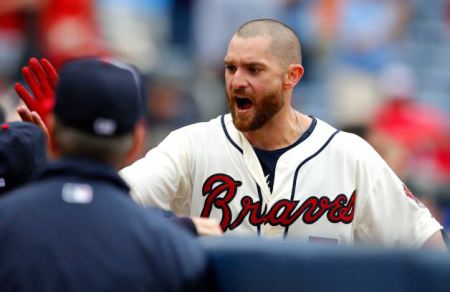
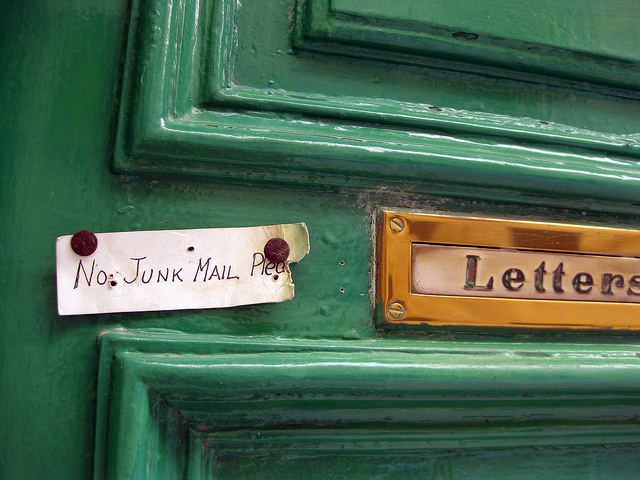
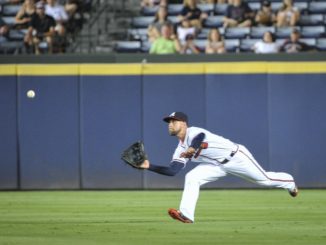
Excellent article. Your analysis does put things into perspective for those of us who simply can not comprehend this trade or refuse to because of our emotional attachment to players. Thank you for publishing.
Thanks David. I’m not going to say I love this trade, but after thinking through the process I had in the article above (which I started before the trade and had to rework), I can at least say I understand it. We traded positions of strength and got back a quality, relatively cheap, position prospect at a position of need and who can hit. Considering Wood was going into arbitration, it would not surprise me if Wood actually cost more than Olivera by arb 2 if he pitches well, and we actually control Olivera two years longer than Wood.
To me, the concern is not as much about what we gave up and got in terms of performance and cost as it is some concerns I have about Olivera’s age and health.
Correction: Wood has one year less control than Olivera, not two. Unless Olivera deals with a serious UCL injury and the option kicks in, which I would prefer to avoid…
Peraza’s walk rate means he’s really not a leadoff hitter. I think it’s 50/50 that he’ll ever be anything more than a backup infielder.
But I hate Olivera’s age and injury history. You know what “injured 30 year old player” usually means? The end is near, especially when they’re talking about elbows.
Yeah, there are lots of examples of guys who have had many great years past age 30. Hank Aaron, Randy Johnson and ARod come to mind. Is there any reason to think we should be comparing Hector Olivera to any of these guys? I didn’t think so.
I understand the trade strategy and it makes a lot of sense, but I do have some caution about Olivera. Mine is more the potential injury than age.
When it comes to don’t need him to be productive until he’s 40, just until he’s about 35, and I think there are a reasonable number of players who have done well up to that age. It’s a bit unfair to compare him to the best of the best, but what about a Jason Werth or a Ben Zobrist? These types of players put up really solid numbers in their 30’s and are just starting to slide now that they are getting into the mid-30’s.
Excluding injury history and just looking at performance, we are taking a bit of a gamble on a guy who hasn’t played in the majors, but apparently has a really good hitting approach, good contact, uses all fields, takes walks. These types of hitters tend to age a little better than the all or nothing guys (like Uggla). But because he was an international FA with no MLB experience, we are getting a potentially good-to-great hitter for pennies on the dollar compared to an MLB free agent of around the same age. For instance, people talk about Alex Gordon being a good option if the Braves looked for an OF on the FA market, but he’s about a year older than Olivera and will cost a lot more.
So that leaves the injury. I’m concerned about that, but have come to terms with it, largely because I can find no evidence that it really exist. The only clear comment one way or the other was from Olivera saying it was untrue. The Dodgers did two MRIs, and the Braves doctors did their own thorough medical evaluation. While never saying there was not an issue, they did agree to sign him (Dodgers), and trade for him (Braves). So I’m just going to trust that all the doctors didn’t miss something important because it’s all I know to do at this point.
Apparently he did have a confirmed issue that kept him out a season a couple of years ago in Cuba. It was with his bicep, though, and it was related to blood clots (going off the top of my head on that. Feel free to confirm.) My understanding was that a person completely recovers from this injury, but is slightly more susceptible to it recurring.
Hey, great article. This was what I was thinking about last night in bed and a bit this morning before jumping online…. and a lot more. Very detailed.
Hit me up on Facebook. I know we had a difference of opinion on one topic, but seemed aligned on the most of the rest. Plus, I got kicked from that group for less than our convo… So I guess I won’t be seeing you around in there. It was all because I thought Freddie Freeman deserved some slack after coming back from the DL, and that he’s a good 1st baseman…and provided stats to back my opposing opinion. LOL.
Oh well, I’ll make sure to link to this site either way bro. Good read.
John Gant could be a top-5 prospect in the Braves system.
We’ll see if he builds off last year’s success after the trade, but it does seem like we got better value than we gave up. Really, the fact that we can even speculate about him being a top 10 prospect means we already got better value than we gave up since the Mets have nothing from that trade at this point and we have two guys that could contribute at the MLB level. (And one of the guys we gave up back.)
Although, I have to say, my excitement for Gant falls a bit shorter than the Fangraphs ranking…which had him near the top of our prospect list.